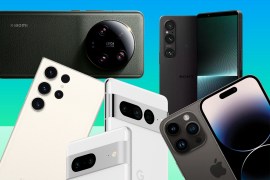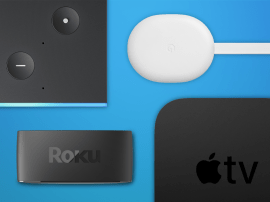Best foldable phone 2025: next-gen phones reviewed and rated
These sci-fi phones transform into tablets
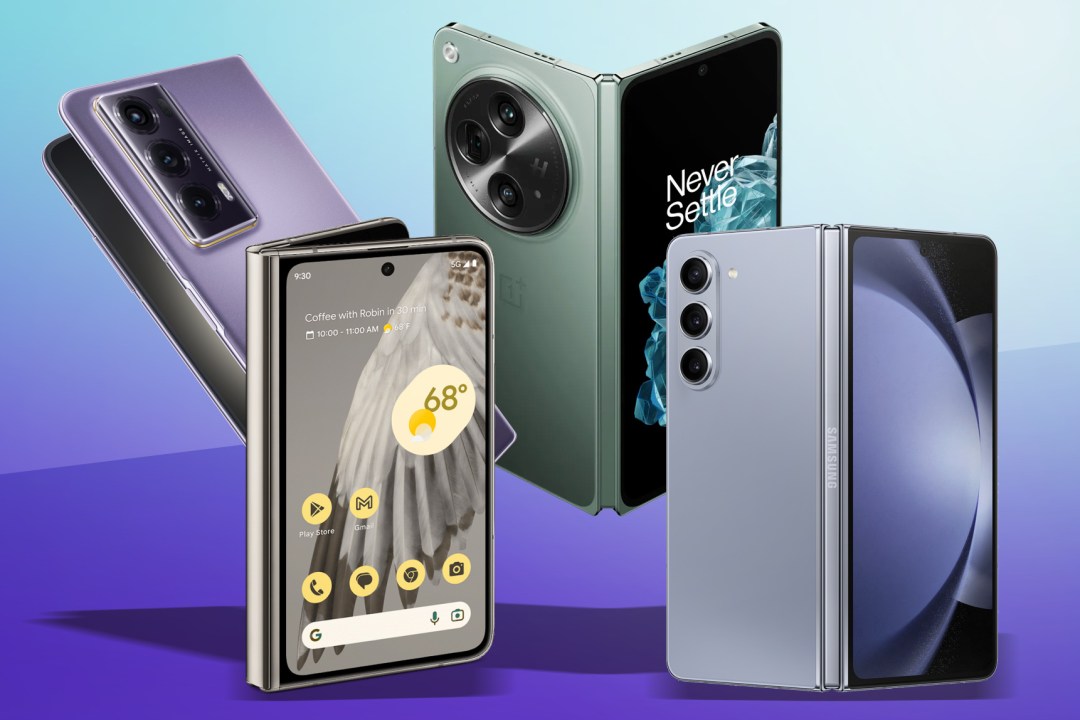
Smartphones that transform into sizeable tablets used to be pure sci-fi… but now bendable screens are our tech reality. Besides the obvious wow factor, these book-style foldables offer innovative flexibility that could change the way you use your mobile – while also packing in hardware to rival the best phones with more traditional form factors.
Think folding phones are just a hinged gimmick? Think again. The best foldable phones are about as versatile as handsets get, even if they almost exclusively come at prices that make regular flagships look cheap. We’ve tested them all to work out which is best, and highlighted the upcoming foldable models to look out for.
Maybe you’d prefer a more compact clamshell foldable? Read all about the best flip phones here.
Why you can trust Stuff: Our team of experts rigorously test each product and provide honest, unbiased reviews to help you make informed decisions. For more details, read how we test and rate products.
Quick list: what is the best foldable phone?
The Oneplus Open (buy now) is available at a lower price but still has brilliant build quality. Simply, this is the finest foldable we’ve seen yet.
The Google Pixel 9 Pro Fold (buy now) is an astonishing year-on-year turnaround for Google’s foldable effort. The Pixel 9 Pro Fold isn’t quite a class leader but has the styling, screen and software to earn a podium place.
The Honor Magic V3 (buy now) is a foldable phone that makes owning a foldable phone feel normal. It’s a superb-feeling phone that’s almost unbelievably thin. And the rest of the hardware is top-notch, too.
The Samsung Galaxy Z Fold6 (buy now) is the best version of Samsung’s book-style foldable – but it isn’t the leap forward fans were hoping for in light of rapidly improving rivals.
The best foldable phones you can buy today:
Best foldable phone overall
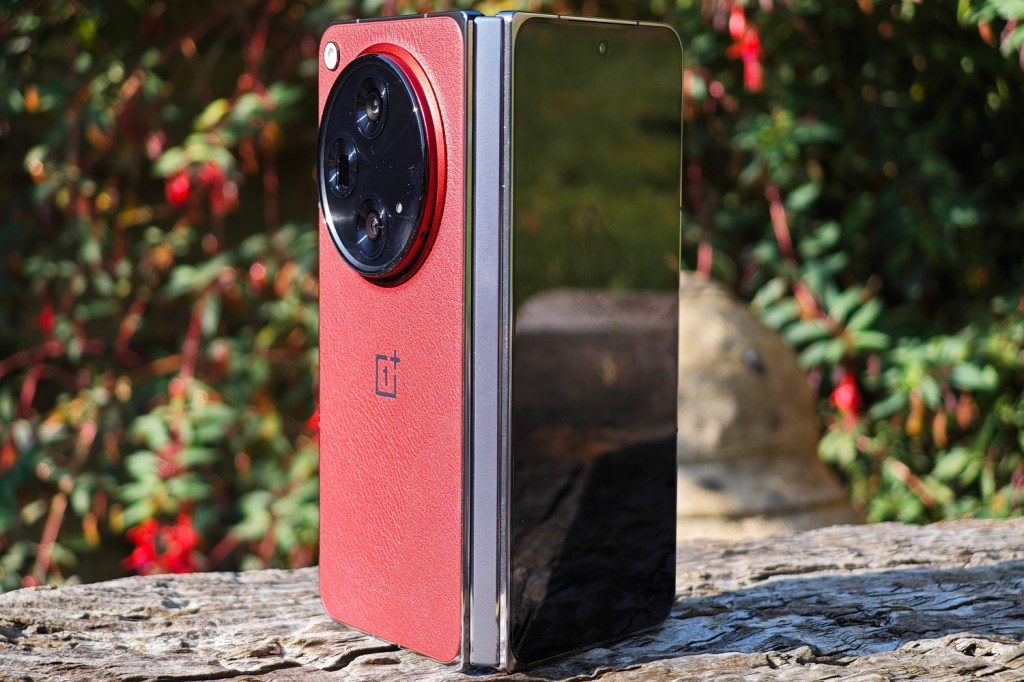
1. OnePlus Open
Stuff Verdict
Lower price, brilliant build: the OnePlus Open is the finest foldable we’ve seen yet.
Pros
- Outstanding build quality and near-perfect form factor
- Flagship-grade performance and battery life
- Apex edition looks slick and doubles storage – but still undercuts rivals
- Still the best take on foldable multitasking
Cons
- Obviously pricier than any non-folding flagship
- Digital zoom a struggle in lower light
- No wireless charging and a compatible stylus is hard to find
| OnePlus Open specs | |
|---|---|
| Screen | 7.82in, 2440×2268 AMOLED, 120Hz (main), 6.3in, 2484×1116 AMOLED, 120Hz (cover) |
| Processor | Qualcomm Snapdragon 8 Gen 2 |
| RAM | 16GB |
| Storage | 512GB |
| Software | Android 13 with OxygenOS 13 |
| Cameras | 48MP+64MP+48MP (rear), 20MP+32MP (main/front) |
| Battery | 4805mAh |
| Dimensions | 153x143x5.8mm (unfolded) |
| Weight | 245g |
The OnePlus Open didn’t quite come out of nowhere; sister brand Oppo, which is on its third-gen foldable now, lent a hand with the hardware. Yet the Open still managed to school much bigger companies with a simply brilliant form factor, clever multitasking software that makes the most of that large internal screen, and a trio of cameras more capable than almost any other book-style folding phone available at the time.
A Snapdragon 8 Gen 2 CPU, a sizeable amount of internal storage, and plenty of RAM make this a potent handset, and battery life is also very good for a foldable. Wired and wireless charging is still faster than anything Google or Samsung offers, and OnePlus has even managed to undercut both the Galaxy Z Fold 5 and Pixel Fold on price. While newer rivals have fresher chipsets, this is still the best all-around foldable money can buy.
OnePlus only brought the Open to a few select territories. The Oppo Find N3 is mechanically identical, so is a fine alternative if you live in a country where Oppo still reigns supreme.
- Read more: OnePlus Open review
Best foldable phone for photography
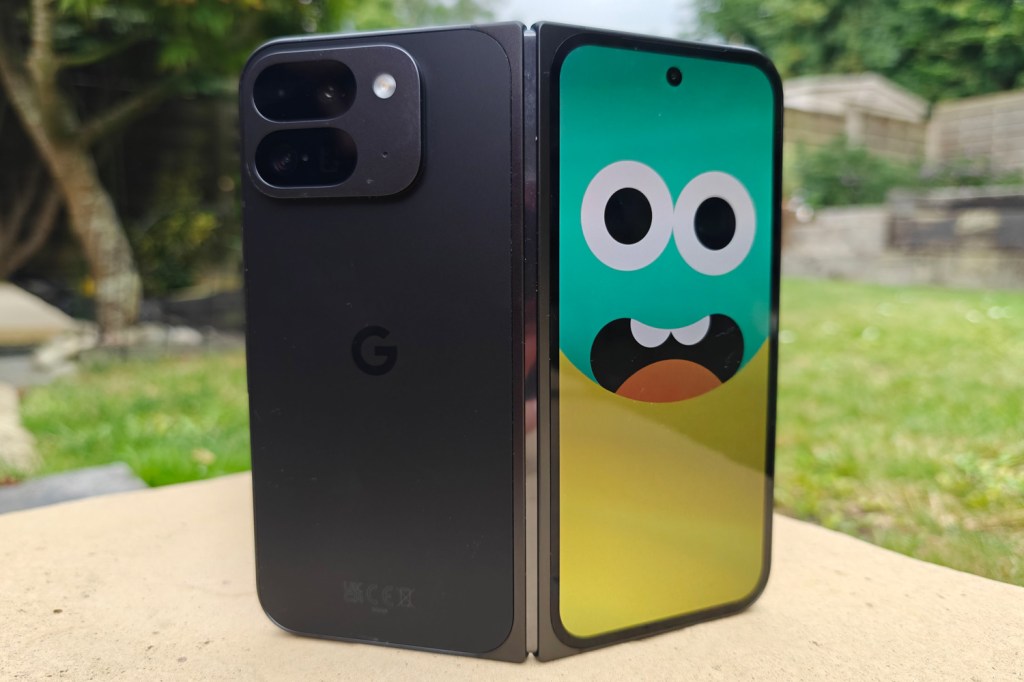
2. Google Pixel 9 Pro Fold
Stuff Verdict
An astonishing year-on-year turnaround for Google’s foldable effort. The Pixel 9 Pro Fold isn’t quite a class leader, but has the styling, screen and software to earn a podium place.
Pros
- Major design overhaul for the better
- Consistent performance and day-long battery life
- Very capable rear cameras
Cons
- Beaten by the competition in several key areas
- Multitsking feels restrictive compared to rivals
- Still eye-wateringly expensive
| Google Pixel 9 Pro Fold specs | |
|---|---|
| Screen | 8in, 2152×2076 folding OLED 120Hz (main), 6.3in, 2424×1080 OLED 120Hz (cover) |
| Processor | Google Tensor G4 |
| RAM | 16GB |
| Storage | 256-512GB |
| Software | Android 14 |
| Cameras | 48MP+10.8MP+10.8MP (rear), 10MP+10MP (front) |
| Battery | 4650mAh |
| Dimensions | 155x150x5.1mm |
| Weight | 257g |
Google’s second foldable was a complete rethink on the first, becoming part of the Pixel 9 series rather than a standalone sequel and changing the form factor to one more in keeping with the rest of the mobile world. Newer, more efficient silicon and all of Gemini’s AI smarts also made the cut.
It doesn’t go overboard on multitasking or productivity, and the rear cameras aren’t much of an upgrade over the original Pixel Fold – but they still trade blows with big rival Samsung, and battery life consistently lasts all day. With slender dimensions and a more phone-like form factor when closed, it’s a massive improvement over its predecessor in terms of daily use.
- Read more: Google Pixel 9 Pro Fold review
Best thin foldable phone

3. Honor Magic V3
Stuff Verdict
A foldable phone that makes owning a foldable phone feel normal – the Honor Magic V3 is a superb-feeling phone that’s almost unbelievably thin. And the rest of the hardware is top notch, too.
Pros
- Superb design and lightweight build
- Great all-day battery life
- Decent set of cameras
Cons
- It’s still expensive compared to standard flagships
- MagicPortal still needs work
- Multitasking not as good as OnePlus
| Honor Magic V3 specs | |
|---|---|
| Screen | 7.92in 2156×2344 1-120Hz AMOLED (main), 6.43in 1060×2376 1-120Hz OLED (cover) |
| Processor | Qualcomm Snapdragon 8 Gen 3 |
| RAM | 16GB |
| Storage | 256GB-1TB |
| Software | |
| Cameras | 50+40+50MP (rear), 20+20MP (front/inner) |
| Battery | 5150mAh |
| Dimensions | 157x145x4.4mm |
| Weight | 226g |
If the Magic V2 was the phone that proved foldables didn’t have to be portly, the V3 was Honor simply showing off. The Magic V3 is an inconceivable 9.2mm when folded, and at 226g weighs you down less than some non-folding flagships. It unfolds to a barely-there 4.4mm, yet still finds room inside for a top-tier Snapdragon chipset, trio of very capable rear cameras, and a 5150mAh battery that lasts longer than almost every other foldable I’ve tested to date.
Honor’s software still isn’t quite as slick as its main rivals’ and the firm needs to do better when it comes to update commitments. It undercuts more recognisable names like Samsung, but not by a huge amount. Ultimately that makes it a great foldable, rather than the greatest – but size-wise it’s still the handset to beat.
- Read more: Honor Magic V3 review
Best foldable phone with a stylus
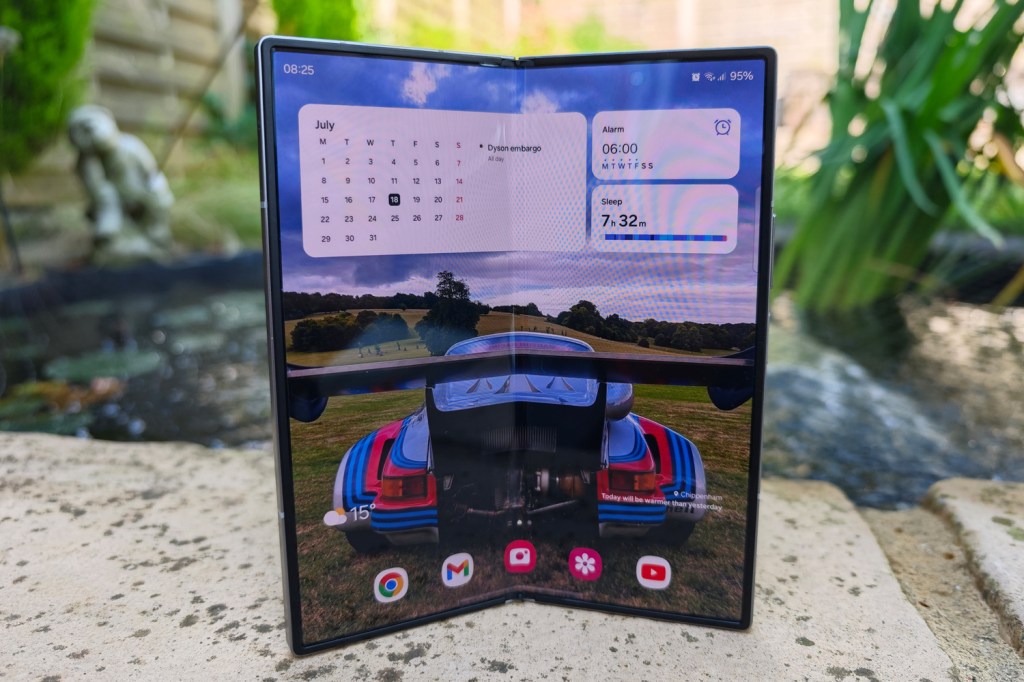
4. Samsung Galaxy Z Fold6
Stuff Verdict
The best version of Samsung’s book-style foldable – but the Galaxy Z Fold6 isn’t the leap forward fans were hoping for in light of rapidly improving rivals.
Pros
- S24 Ultra-inspired design looks slick
- Software as streamlined as ever, with lots of AI additions
- Performance is top of the class
Cons
- Performance is top of the class
- Charging speeds are disappointingly slow
- Slender cover screen still a usability struggle
| Samsung Galaxy Z Fold6 specs | |
|---|---|
| Screen | 7.6in, 2160×1856, 120Hz AMOLED (main), 6.3in, 2376×968, 120Hz AMOLED (cover) |
| Processor | Qualcomm Snapdragon 8 Gen 3 |
| RAM | 12GB |
| Storage | 256GB-1TB |
| Software | Android 14 |
| Cameras | 12+50+10MP (rear), 4MP (front), 10MP (cover) |
| Battery | 4400mAh |
| Dimensions | 154.1x133x5.6mm |
| Weight | 239g |
Samsung must be pretty content with how many Galaxy Fold phones it shifts each year, because it hasn’t exactly done much between generations to court customers away from newer, flashier rivals. The Z Fold6 is much the same as last year’s effort, only with some slight visual tweaks, a new generation Snapdragon chipset, and a bumper helping of Galaxy AI.
Cameras, battery life and charging speeds are now all pretty mediocre in the folding world, and while Dex for the big screen and S Pen stylus support make it great for work-based tasks, on-device multitasking is bettered elsewhere too. There’s no denying Samsung has one of the best multi-device ecosystems around, so if you’re all in on its products this is still a very tasty foldable – but if hardware matters, you’ll find better elsewhere.
- Read more: Samsung Galaxy Z Fold6 review
What other folding phones are available?
Western audiences don’t have a huge selection of foldable phones to choose from, but it’s a different story in Asia. These are the most recent ones worth talking about:
The Vivo X Fold3 Pro went global in June 2024, making it one of the easier ‘forbidden fruit foldables’ to get hold of if you don’t mind a grey import. It goes big on photography, and has a simply huge battery.
Xiaomi might have a big presence in Europe, but the Mix Fold 3 remains China-only for now. It’s super-slim, lasts an impressively long time per charge, and takes wonderful photos. The region-specific software could be a headache for anyone wanting to import one, though, and there’s no IP rating for water resistance.
Huawei has the Mate X5, an ultra-slim foldable with a trio of rear camera lenses, including a periscope telephoto – which is still rare in this category. It’s well-made and has stunning screens. But while the firm is banned from using Western hardware or software, there’s little incentive to release it outside of China. There’s also the Mate XT, a first of its kind three-fold phone that’s jaw-droppingly cool – but super expensive.
Finally the Tecno Phantom V Fold is the most affordable book-style foldable around. MediaTek power and a set of rear cameras that are merely decent show how the firm managed to keep costs in check, as does the slightly thicker build. But it does well to keep its screen crease subtle, and you can’t argue with the price.
Upcoming foldable phones
Want to wait and see what the next generation of foldable phones bring to the table? These models should all arrive within the next twelve months.
The Samsung Galaxy Z Fold 7 is the best part of a year away at this point, with a likely July 2025 arrival date. There’s a chance – however slim – Samsung might finally listen to critics and make the external screen wider. New camera hardware and faster charging speeds wouldn’t go amiss either, but the rumour mill is still pretty quiet right now.
OnePlus should announce the Open 2 towards the end of 2024, alongside the Oppo Find N4. Both should see improved innards, cleverer cameras and some AI software upgrades.


